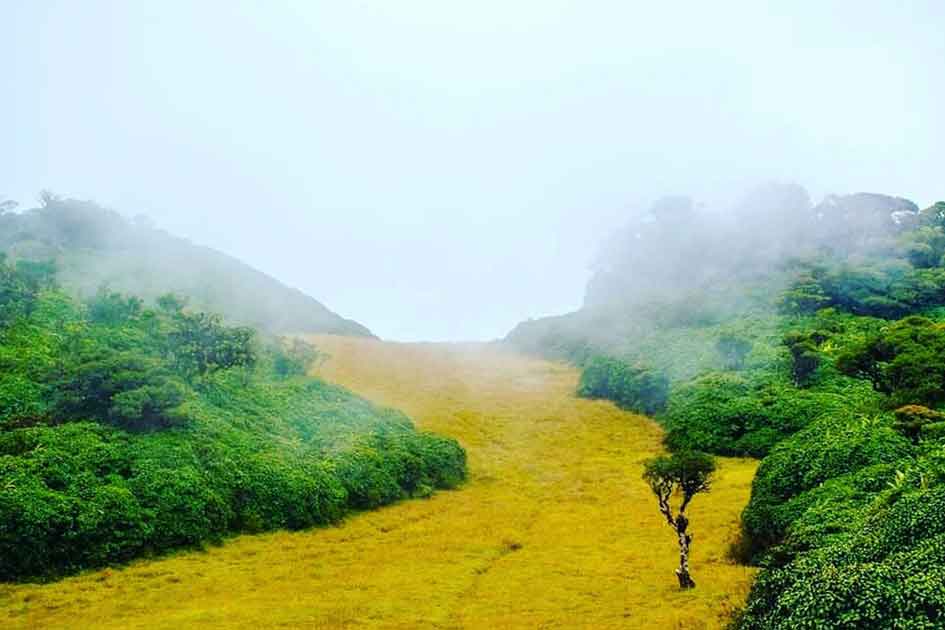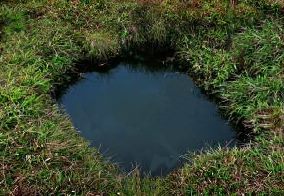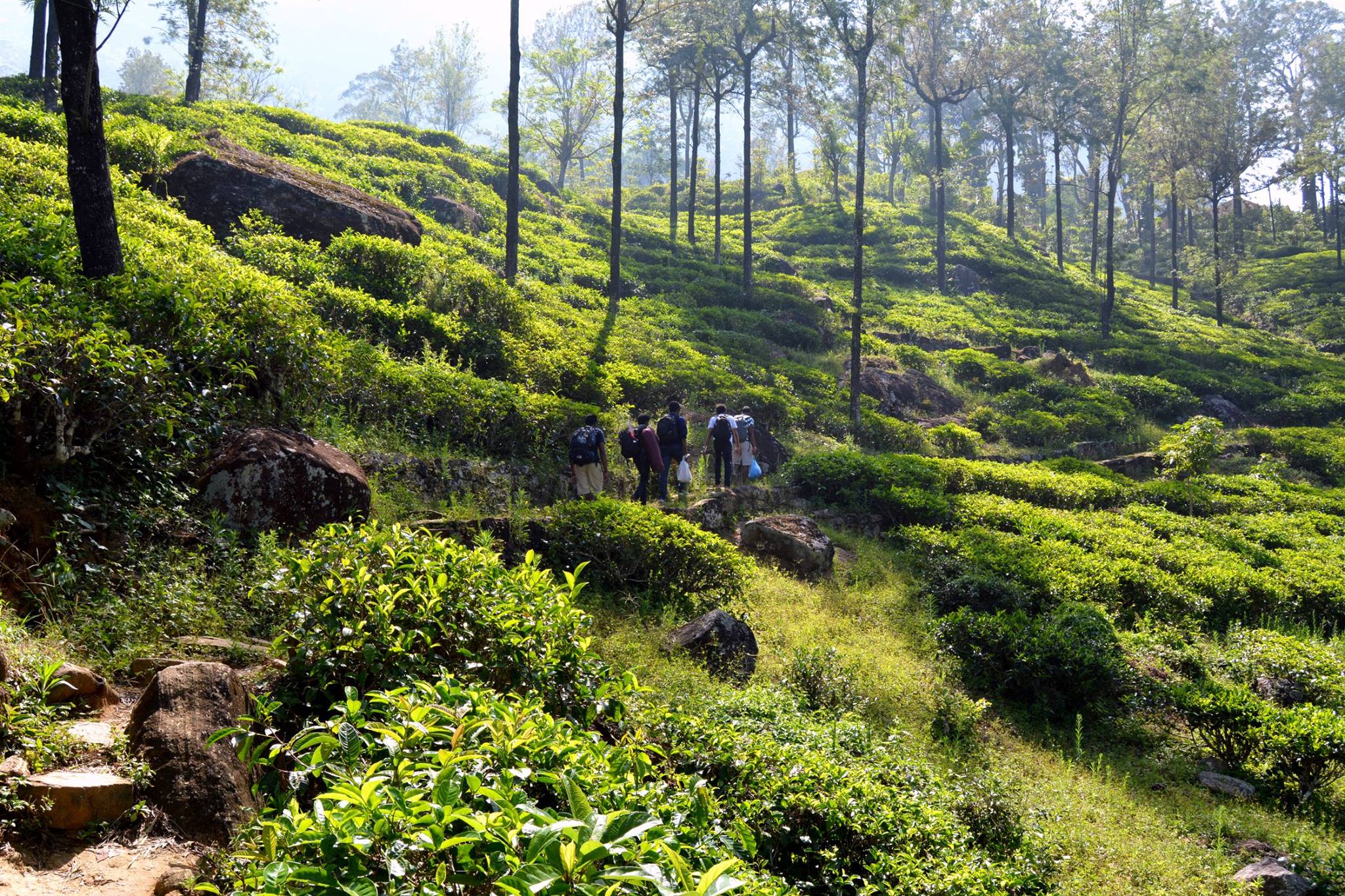Chariot Path of King Rawana is a Grass Land (Plain) on a top of a mountain range that is surrounded by a pigmy forest, which looks like a pathway. It is a remarkably beautiful place, which has breathtaking views and unspoiled extraordinary environment. This is located near Frotoft Tea Estate in Kandy district in the Central province of Sri Lanka.

Introduction
The chariot path is the route which Ravana transported Sita Devi on his chariot from Sita Kotuwa to Ashoka Vatika also known as Ravana grass pathway which is located jungle on the top of Ramboda Hills on the Kandy – Nuwara Eliya main road. This is one of the iconic Ramayana sites in Sri Lanka. Till date no vegetation grows on this barren land except grass. King Ravana is believed to have used this passage on top of these hills to show Sita Devi, the beauty of his kingdom as stated in the great epic of Ramayana.

The Sita tear pond is a small pond that can be found en-route by the chariot path. A pond located on this Chariot Path is believed to have been formed here by the tears of Sita Devi and has not dried up so far even during severe droughts when the adjoining rivers do. It is located on top of a mountain range in the central highlands of Sri Lanka which has spectacular views from an angle of 360 degrees around.

Chariot path and Sita tear pond are important Ramayana Sites in Sri Lanka.
Who Was King Rawana?
Before diving into the details of the Chariot Path, it’s essential to understand the legendary figure behind it. King Rawana (or Ravana) is a central character in the ancient Indian epic, the Ramayana.
Known as a mighty king, a skilled warrior, and a devoted scholar, Rawana ruled the island of Lanka (modern-day Sri Lanka) over 5,000 years ago. While he is often depicted as a villain in the Ramayana, in Sri Lankan folklore, Rawana is celebrated as a heroic and wise ruler.
Rawana’s legacy is deeply embedded in Sri Lanka’s culture, with numerous sites across the island associated with his reign. The Chariot Path is one such site, believed to be a testament to his engineering prowess and mystical powers.
What is the Chariot Path of King Rawana?
The Chariot Path, also known as Rawana’s Chariot Track, is a mysterious and ancient pathway located in the Ella region of Sri Lanka. This unique site consists of two parallel grooves carved into the rock, resembling tracks left by a giant chariot.
According to local legend, these grooves were created by King Rawana’s flying chariot, which he used to travel across the island.
The Chariot Path is situated near the Rawana Ella Cave, another significant site linked to the king. The cave is believed to have been a hideout for Rawana when he abducted Princess Sita, as narrated in the Ramayana. Together, these sites form a fascinating trail that offers a glimpse into Sri Lanka’s mythical past.
The Legend Behind the Chariot Path
The Chariot Path is steeped in legend and folklore. According to the Ramayana, King Rawana possessed a magnificent flying chariot known as the Dandu Monara (Peacock Chariot). This chariot was said to be powered by mystical energy and could travel vast distances in a short time.
Local tales suggest that the grooves on the Chariot Path were created by the wheels of Rawana’s chariot as he traveled between his palace and the Rawana Ella Cave. Some even believe that the path was used to transport Princess Sita during her captivity.
While these stories are rooted in mythology, they add a layer of mystique to the site, captivating the imagination of visitors.
Exploring the Chariot Path: What to Expect
Visiting the Chariot Path is a unique experience that combines history, nature, and adventure. Here’s what you can expect during your visit:
The Rock Carvings: The most striking feature of the Chariot Path is the two parallel grooves carved into the rock. These grooves are approximately 1.5 meters apart and extend for several meters. The precision and depth of the carvings have puzzled archaeologists and historians, leading to various theories about their origin.
Scenic Surroundings: The Chariot Path is surrounded by Ella’s breathtaking landscape. As you explore the site, you’ll be treated to stunning views of verdant hills, tea plantations, and the distant peaks of the central highlands.
Rawana Ella Cave: A visit to the Chariot Path is incomplete without exploring the nearby Rawana Ella Cave. This ancient cave is believed to have been used by King Rawana as a hideout and offers a fascinating glimpse into Sri Lanka’s prehistoric past.
Hiking Opportunities: The trail to the Chariot Path is a short but rewarding hike. Along the way, you’ll pass through lush forests and open meadows, making it a perfect activity for nature lovers.
Where is the Chariot Path Located?
The Chariot Path is situated in the Pussellawa region, in close proximity to the Piduruthalagala Mountain Range, the highest peak in Sri Lanka. The journey to this scenic trail begins from Labookellie, near Nuwara Eliya, a picturesque town famous for its tea plantations and cool climate.
Chariot Path Location
Best Time to Visit
The ideal time to visit the Chariot Path is during the dry season (December to April) when the weather is pleasant and the trails are easy to navigate. Early mornings offer the best experience, with golden sunlight illuminating the landscape.
How to Reach the Chariot Path?
Reaching the Chariot Path requires an adventurous trek through tea estates, pine forests, and grasslands. Here’s how you can get there:
By Road: Travel to Nuwara Eliya or Kandy, both of which are easily accessible by car or public transport.
Starting Point: Begin your trek from Labookellie, passing through Kotmale and Pussellawa.
Hiking Trail: The trail covers 4-5 km of moderate hiking, with breathtaking views of the highlands.
Chariot Path Distance
From Colombo it is a 5 hrs drive (161.3 km) via Kandy Rd, Kandy – Colombo Rd/A1
How to get to Chariot Path
A person who start his journey from Colombo should reach Gampola first. After arriving at Gampola, take a bus to Pussallawa village. From there, you’ll need to hire a car to get to the Frotoft estate. The roads are in poor condition, so make sure you rent a car that can handle a rough ride. You may also take the bus, however, the trips to Frotoft State/ Perettasi village are inconsistent and infrequent. Hiring a car is therefore considerably simpler. It take 1.30hr -2hrs to reach Perettasi village/Frotoft estate. You must first locate the Frotoft state’s/Perettasi village old hospital facility and the trailhead start there.

Journey through the tea estate was not a difficult task. But when start to climb, it is a footpath that laid along the whole journey towards the slope. So, be careful. It will take 2-3 hrs to the top of the mountain range. Chariot path is surrounded by Kotmale reservoir, Pidurangala, Hanguranketha, Sri Padaya and Hewaheta which gives you eye catching surrounding throughout the journey. It needs minimum half a day to spend there in this wonderful Ramayana site.
Be ready for the chilly weather. In addition, there are wind conditions at night. Also, bring a sweater or hat to protect yourself from the sun. Wear a long-sleeved shirt or t-shirt as well. Because you will be passing through grasslands, wearing long sleeves will protect you from cuts and scratches caused by the spiky grass.
It is not possible to reach this place easily and not possible place for senior citizens and people who are suffering with a heart problem or respiratory illnesses.

Chariot Path Weather
Most of the year, the Chariot Path receives rainfall. The temperature ranges from 10°C to 24°C. Between October and January, heavy monsoon rains fall. The months of February through April are ideal for visiting the Chariot Path. Between these months, the majority of the days are bright, with the least amount of rain.
Tips for Visiting the Chariot Path
- Wear Comfortable Shoes: The trail to the Chariot Path involves some walking, so be sure to wear sturdy and comfortable footwear.
- Bring Water and Snacks: While the hike is short, it’s always a good idea to carry water and light snacks, especially if you’re visiting during the warmer months.
- Respect the Site: The Chariot Path is a place of historical and cultural significance. Be mindful of your surroundings and avoid damaging the rock carvings.
- Visit Early or Late: To avoid the midday heat and crowds, consider visiting the Chariot Path early in the morning or late in the afternoon.







